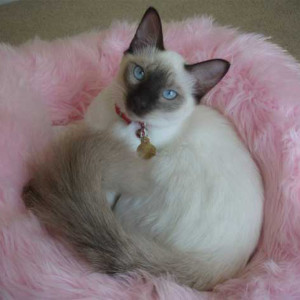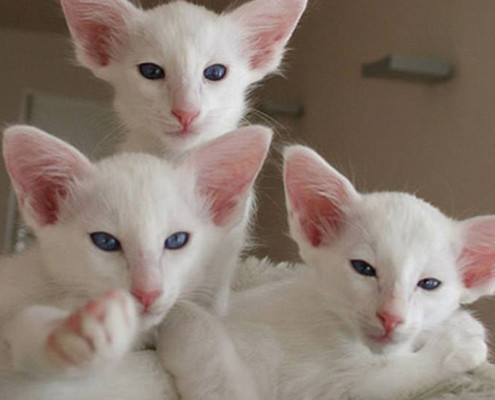Balinese

Meoww!!
The Balinese is named for the island of Bali, famed for its graceful dancers, but he doesn’t actually come from there.
In 5 Words
- Talkative
- Furry
- Intelligent
- Friendly
- Loving
Snapshot
Origin: Siam (Thailand)
Colors: Seal point, chocolate point, blue point and lilac point
Size: Small to medium
Coat Type(s): Longhair
Grooming: Every few weeks
Talkativeness: Very vocal
Activity Level: Very high
Attention Requirement: High
Overall: Can be a handful

Characteristics
Learn About the Balinese
Despite the seemingly obvious origin of Balinese cats, they actually did not come from Bali or any part of Indonesia for that matter. It is not a natural occurring breed, but came from breeding efforts of humans.
During the 1920s, early Balinese cats were known as long-haired Siamese. There were some long-haired kittens in a Siamese litter that were seen as a peculiarity so they were sold to be household cats instead of being show cats. In the 1950s, this practice was changed when Marion Dorsey of Rai-Mar Cattery in California and Helen Smith of MerryMews Cattery in New York started a breeding program for the longhaired felines.
The name was established from personal preference. Smith gave the cats its name “Balinese” because she felt that the beauty and grace these cats possessed were comparable to Balinese dancers. “Long-haired Siamese” appeared to be inappropriate for these graceful cats. However, it is unknown if Smith actually went to Indonesia. The breed shot to fame after this, and numerous breeders worked on perfecting the Balinese appearance. Two kinds of Balinese cats were then developed. Breeders and judges have an inclination towards wedge-head Balinese, while some owners want traditional apple-headed cats.
Like the Siamese, this breed has a wedge-shaped head, vivid blue eyes, and a long slim body. Their soft, ermine-like coat is short when compared to other longhaired cats. The Balinese is recognized in a complete range of colors in most associations, including the four traditional point colors of lilac, blue, seal and chocolate; as well as traditional colors like cream and red. They have patterns of either tortie point or lynx tabby point. But in the Cat Fanciers’ Association, only four colors are accepted for the Balinese; other colors outside the standards make them Javanese.
The Balinese cat is highly intelligent among the longhaired breeds. They are rated 9-10. Himalayans are rated as 7 while Persians as 6. This breed tends to live between 13 and 15 years.
The Balinese loves attention as much as the Siamese. They are smart and sweet. They like to be around their people and play with them a lot. They have a lower voice than the Siamese but this does not stop them from being a vocal breed. They may vocalize for no apparent reasons at times. They rarely complain by scratching when irritated, but when they do, they also moan and growl and may sometimes hiss.
These cats are highly social. They are sensitive to your moods and feelings. More often than not, they will be willing to cheer you up with some joyful chatter if they feel that you’re feeling gloomy.
They can often ride their people’s shoulders since they are agile leapers. They can be easily taught to fetch, being able to bring the toy or ball back to be thrown again. You won’t be bored with their antics and their loving disposition. They can be pushy in their requests for attention, but they have a special dignity particular to the Siamese and Balinese breeds.
The Balinese is a generally healthy cat, but can still be exposed to usual feline diseases. This includes lysosomal storage disease. It is a condition which can result neurological signs and feline acromelanism, which makes the coat color change with differences in temperature. Therefore it is safe to get a kitten from a breeder who provides a health guarantee. A guarantee may not be able to save the kitten from all possible conditions, but it does imply that the breeder is willing to stand behind what her litter turns out to be.
The Balinese has a silk coat that requires weekly brushing. It does not shed much so it is easy to groom. The only other care your cat may require is occasional ear cleaning and weekly nail trimming. It may develop periodontal disease so it is vital to brush the teeth using vet-approved toothpaste. It may also need regular veterinary cleanings.






